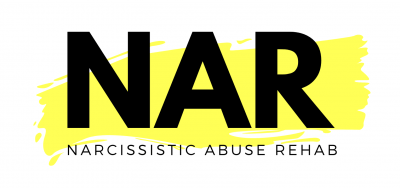IMAGINE LIFE WITHOUT the ability to experience genuine feelings of joy, love, or compassion. It’s hardly a stretch to suggest that one’s internal ecosystem would be a bleak and desolate landscape. However, if you were to open up the mind of a pathological narcissist and look inside, what you would find is a psychological wasteland riddled with persecutory objects.
The ambiguity of malignant narcissism is that its outward manifestations are often the opposite of the internal reality, which is a gaping void. The gnawing emptiness within is a catalyst for grandiose pretensions that serve to preserve their idealized false self. Chest thumping boasts of supremacy are a safeguard against the toxic shame that has engulfed their true self.
Where others have a conscience, the pathological narcissist has a vacuum. For this reason, they are on a constant hunt to consume anything that might fill the void. Alcohol, narcotics, pornography, sex, gambling, people – you name it, the narcissist ravenously devours it. But it doesn’t fill them up because they are bottomless pits.
When narcissists encounter people who are able to manifest constructive emotions the narcissist cannot, it wounds their pride, stirs their jealousy, and causes a narcissistic injury.
What is a narcissistic injury?
A narcissistic injury is a threat to the narcissist’s false self. The threat may be real or imagined. What matters is that the narcissist’s steely psychological armor is penetrated and they experience a painful reminder that their false self is an illusion.
Sensing danger, their ego sends all hands on deck to rescue the false self from annihilation. For this reason, narcissistic injuries go hand in hand with narcissistic rage.
The narcissist’s first line of defense is a disavowal of reality. They devalue the threat, stripping the individual of their humanity and reducing them to the status of object. The narcissist’s ego then fractures the object as it resorts to primary defense mechanisms, such as splitting and projection.

Someone who was once all good is now all bad. A person once hailed as the light of the narcissist’s life becomes the very heart of darkness. The threatening object is made wrong so that the false self can be right. Thus, the narcissist vindicates themselves from any criticism, wrongdoing, and – most importantly – shame.
The more the narcissist uses splitting as an ego defense, the more anything resembling a cohesive identity unravels. Whenever the ego splits an object, an identical split takes place in the ego itself, causing it to become fragmented. The more a narcissist splits off from the abuse they inflict, the more it escalates.
To escape accountability, the narcissist uses a sleight of hand and projects their sadistic acts on to the people they target. This enables them to shape-shift into a new persona – which they do with the ease of a serpent shedding its skin.
What are the causes of narcissistic injury
The narcissist is a paper tiger. Their psychological structure is too feeble to grasp a self-concept with any complexity. They are satisfied to worship an illusion of their perfect false self. This disposition is common in toddlers, but it’s crippling in adults.
The construction of a false self may have shielded them from adverse childhood experiences in their early years, but it is maladaptive in adulthood as it prevents them from living authentic emotional lives.
The need for emotional bonds disgusts them. Yet, paradoxically it is also something they covet.
While the false self mimics edifying emotions, it does not experience them. A kind of emotional rigor mortis defines the narcissist’s existence.
How do narcissists cope with narcissistic injuries?
Their fragility sends them on predatory crusades to boost their ego. They may sustain their insatiable false self with adulation or attention or with cruel power trips utilizing coercive control, and psycho-emotional abuse.
Narcissists believe that by destroying a person or thing, they obtain power over it. They accomplish this through deception, seduction, and psychological cannibalism. To the narcissist, this affirms their imaginary superiority.
It is their way of making the false self appear real.

Narcissistic Injury FAQ
A narcissistic injury is any threat to the narcissist’s false self. The threat may be real or imagined. What matters is that the narcissist’s psychological defenses are penetrated and they experience a painful reminder that their false self is an illusion.
Narcissists are shame-based and have fragile ego structures. They can suffer from low self-esteem, depression, rage, and paranoia.
Narcissists want power and control.
Bibliography
- Kinsey, Michael C. Deconstructing Narcissism: A Model of Emotional Dynamics of the Narcissistic Personality. Mindsplain.com, February 24, 2020.
- Klein, Melanie. Envy and Gratitude, and Other Works, 1946-1963. London: Vintage, 1988.
- Bokanowski, Thierry, and Sergio Lewkowicz, eds. On Freud’s Splitting the Ego in the Process of Defense. S.l.: Routledge, 2019.
- Webber, Rebecca. Meet the Real Narcissists (They’re Not What You Think). Psychology Today. Sussex Publishers, September 5, 2016.
- George F.R., Short D. The Cognitive Neuroscience of Narcissism. Journal of Brain, Behavior and Cognitive Sciences, February 9, 2018.
- Kohut, Heinz. “The Analysis of the Self: A Systematic Approach to the Psychoanalytic Treatment of Narcissistic Personality Disorders.”
- Jarrett, Christian. “At a Neurological Level, Narcissists Are Needy.” The Cut. July 8, 2015.
- Malkin, Craig. “Rethinking Narcissism: The Secret to Recognizing and Coping with Narcissists.” New York: Harper Perennial, 2016.







No Comments
Comments are closed.